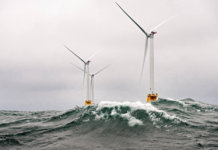 Conflicting forces have been driving the renewable energy market this year. On the positive side, renewable portfolio standards push the purchase of renewable energy. On the negative side, the lackluster economy continues to depress demand for electricity, with an attendant dampening of power prices.
Conflicting forces have been driving the renewable energy market this year. On the positive side, renewable portfolio standards push the purchase of renewable energy. On the negative side, the lackluster economy continues to depress demand for electricity, with an attendant dampening of power prices.
The lower power prices are further affected by low natural-gas prices. These negative forces have reduced utilities' appetite to enter into long-term power purchase agreements (PPA) because of concern over the need for additional committed supply. Where utilities are inclined to buy renewable energy, the price paid has been at markedly lower rates than those seen prior to the financial crisis.
The standard approach for non-utility-owned generation is project financing based on a long-term PPA with a creditworthy purchaser, at a price that provides for coverage of operating costs, payment of principal and interest on long tenor debt, and recovery of equity capital (including a reasonable return).
In the absence of a long-term PPA, the developer faces the potential of both price and volume risk in selling on the spot market. The conventional wisdom says that no PPA means no capital to build a project.
A number of developers have come to the conclusion that this may not be the best time to go long on PPAs. One option is to defer development until energy markets recover. Another approach being taken by a handful of innovative developers is to build projects on a merchant basis without a long-term PPA.
These developers anticipate being well positioned to take advantage of price spikes as demand for energy grows and, potentially, to bid for supply contracts in later years when long-term prices recover.
A merchant project must be located where it has ready interconnection, has access to an energy market for spot sales, and expects an increasing level of energy demand and pricing as economic growth occurs. The project should also be located where existing or potential generation overbuild is unlikely.
The risks of a merchant project include lack of correlation of energy prices to wind energy costs; lack of correlation of periods of high energy demand (and, therefore, price) to periods of wind generation; potential volatility of energy prices; and an abundance of other energy, including other wind projects or other generators either located in the jurisdiction or capable of obtaining access by transmission, that may be or become available.
Having a long-term PPA usually mitigates these risks. However, long-term agreements largely eliminate the upside potential for taking advantage of increasing energy demand and prices.
The new merchant projects are principally being financed with equity from parent companies in some cases and private equity in others. The rate of return (ROR) on an unleveraged merchant project initially is not likely to meet investors' target returns.
But if the projects can take advantage of energy rate arbitrage that may exist in the market in the future – and even sign a long-term PPA at a better rate than currently available – then the equity return should be quite attractive.
Equipment vendors are another source of capital for the merchant projects. Turbine manufacturers anxious to establish a presence in the U.S. have been supporting merchant projects either by providing discounted pricing on turbines or by directly investing equity. The ROR expected by an equipment vendor is much less robust than expected by private equity.
Debt capital for these projects is being provided sparingly by hedge funds and private equity firms. Debt for merchant projects is not currently being provided by the traditional project finance banks. The terms of this alternative provider debt are quite different than the terms offered by the traditional project finance lenders on fully contracted transactions.
Merchant project debt is at a much lower debt/equity ratio than in a typical bank financing. For example, the tenor is shorter, with ‘cash sweeps’ to ensure that the debt is paid down quickly if the project generates higher revenues because of better prices or production.
The interest rate is significantly higher than the rates available in a project with a PPA. Although the terms of the alternative providers may seem unattractive compared to typical bank project financing, the alternative provider debt is still significantly cheaper than equity from the project sponsor's perspective.
Another financing path available to project developers is to obtain a hedge contract from a financial institution. In a hedge transaction, the hedge provider agrees to pay a fixed price for a specified production volume of energy and, in turn, receives the variable payments correlated to that energy production.
Hedge tenors tend to range between five years and seven years, with a maximum purchase volume set at the P90 production level. The benefit of the hedge is to permit the project sponsor to obtain bank project financing against the revenues from the hedge.
The developer's downside is that the hedge pricing takes into account the hedge provider's assessment of the market risk and, thereby, reduces the potential equity upside for the sponsor from recovering power markets.
If the hedge has a limited volume and tenor, then there still is a merchant component (for example, production in excess of the P90 case or beyond the term of the hedge) that remains an equity risk and that has the potential for enhanced equity return, assuming energy market pricing recovers.
Will merchant power become a dominant portion of new wind energy generation in the coming year? No. But for well-located projects with strong sponsors, a merchant approach offers an opportunity to be an early entrant in a market with recovering prices – able to both take advantage of immediate short-term price spikes and be in a position to contract on a long basis on relatively short notice. Â Ed Feo is managing director of USRG Renewable Finance, an investment firm. He can be reached at ed@usrgrenewablefinance.com.



